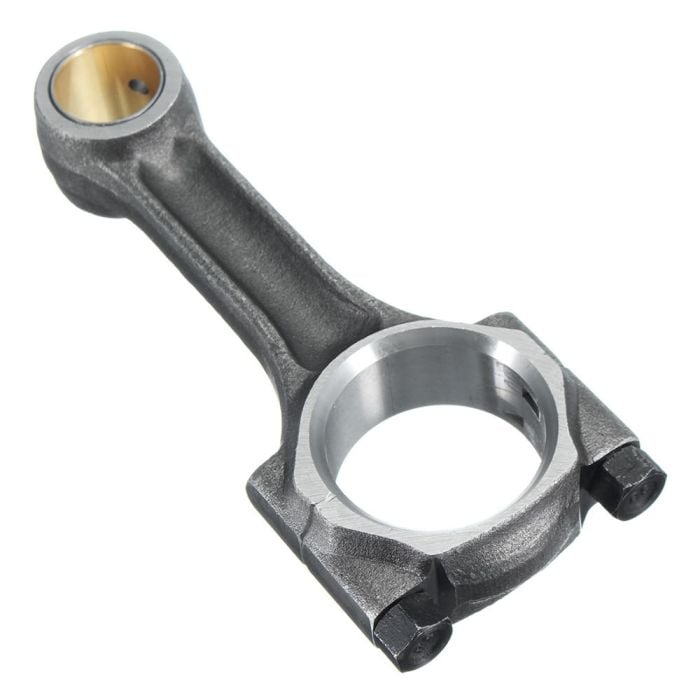Reduce downtime by using a well-maintained clp engine.
Reduce downtime by using a well-maintained clp engine.
Blog Article
Just How a Clp Engine Can Enhance Efficiency in Numerous Industries
The development of CLP engines notes a considerable shift in functional effectiveness across different fields, driven by their ability to optimize fuel usage and decrease downtime. As companies increasingly prioritize sustainability along with performance, the role of CLP engines becomes even much more important.
Review of CLP Engines
CLP engines, or Constant Liquid Propellant engines, represent a significant development in propulsion technology, specifically for room applications. These engines use a constant feed system that enables the continual expulsion of propellant, bring about boosted effectiveness and performance contrasted to standard solid or hybrid propulsion systems. By maintaining a consistent flow of liquid propellant, CLP engines can attain much more specific drive control, which is critical for navigating spacecraft in various goal situations.
The design of CLP engines incorporates sophisticated products and ingenious fuel management systems. clp engine. This causes minimized weight and increased integrity, necessary elements for long-duration space objectives. The continual operation lessens the risk of burning instability, an usual difficulty in standard rocket engines.

Advantages in Manufacturing
The manufacturing of Continual Fluid Propellant (CLP) engines offers numerous remarkable benefits that improve both effectiveness and cost-effectiveness. One of the primary advantages is the structured manufacturing procedure, which minimizes the intricacy connected with conventional propulsion systems. By making use of fluid propellant, suppliers can accomplish higher precision in engine performance, bring about optimized energy outcome and reduced waste.
Furthermore, CLP engines facilitate a greater level of modularity, permitting easier integration right into numerous production lines. This flexibility can substantially lower preparations and boost total functional versatility. The use of CLP technology likewise tends to reduce the demand for comprehensive maintenance as a result of fewer moving parts, which translates into reduced downtime and functional expenses.

Applications in Logistics
Leveraging Continuous Liquid Propellant (CLP) engines in logistics supplies significant advantages in operational efficiency and reliability. These engines offer a robust service for different transportation needs, enabling the seamless motion of products across large distances. The fundamental design of CLP engines permits consistent power output, which converts right into smoother and a lot more foreseeable transport routines.
One of the key applications of CLP engines in logistics remains in sturdy products transport, where they can drive both ground and aerial lorries. Their capacity to preserve high performance under varying lots problems makes sure that shipment timelines are met, thereby boosting client fulfillment. Furthermore, CLP engines can be incorporated into automated logistics systems, promoting real-time monitoring and optimizing route preparation.
Furthermore, the toughness of CLP engines minimizes upkeep downtime, enabling logistics companies to optimize their operational capabilities. This is specifically helpful in warehousing operations, where performance in managing and transferring items is essential. As logistics remains to advance, the integration of CLP engines stands for a forward-thinking approach that not just improves efficiency but likewise supports the market's growing needs for dependability and rate.
Influence On Power Efficiency
Exactly How do Continuous Liquid Propellant (CLP) engines boost energy effectiveness in transport? CLP engines utilize a constant circulation of liquid fuel, maximizing combustion processes and keeping a stable thrust outcome. This layout lessens energy losses associated with standard burning engines, where fuel shipment can differ and bring about inefficiencies.
The constant procedure of CLP engines allows for a more effective thermal cycle, leading to greater specific impulse compared to traditional engines. clp engine. This equates to lowered gas consumption for the same amount of work done, my company dramatically lowering operational costs across different transport markets, consisting of aeronautics and maritime sectors
Moreover, the ability of CLP engines to preserve ideal efficiency under differing lots problems lowers the demand for constant velocity and slowdown, better improving gas efficiency. Enhanced power effectiveness not just adds to cost savings but also results in lower greenhouse gas exhausts, straightening with international sustainability objectives.
Future Trends and Innovations
Arising improvements in Constant Liquid Propellant (CLP) engine technology promise to revolutionize the landscape of transport performance and sustainability. As sectors pivot towards greener options, CLP engines stand at the leading edge, integrating cutting-edge products and style approaches that enhance efficiency while decreasing ecological effect.
Among one of the most encouraging patterns is the adoption of crossbreed systems that integrate CLP engines with sustainable energy resources. This synergy can optimize gas intake and lower discharges, lining up with worldwide sustainability goals. Additionally, improvements in computational fluid characteristics (CFD) are promoting the style of even more aerodynamically effective engines, resulting in lowered drag and enhanced fuel effectiveness.
Additionally, the growth of smart surveillance systems is readied to boost operational effectiveness. These systems leverage data analytics and IoT modern technology to enhance engine efficiency in real-time, ensuring that the engines run within their most reliable specifications.
As study remains to check out different propellant formulations-- such as biofuels and artificial fuels-- the future of CLP engines looks encouraging. By harnessing these technologies, industries can not only enhance their performance but likewise add significantly to a cleaner, much more lasting future in transport.
Conclusion
To conclude, CLP engines stand for a significant improvement in performance throughout multiple industries. Their capability to enhance gas intake and decrease operational expenses, incorporated with a my blog continual feed you could try these out system, boosts power output and operational reliability. The combination of sophisticated products and fewer relocating parts decreases upkeep needs, while placement with sustainability objectives positions CLP engines as a critical innovation for the future. Continued advancement in this field guarantees additional renovations in efficiency and environmental efficiency.
Report this page